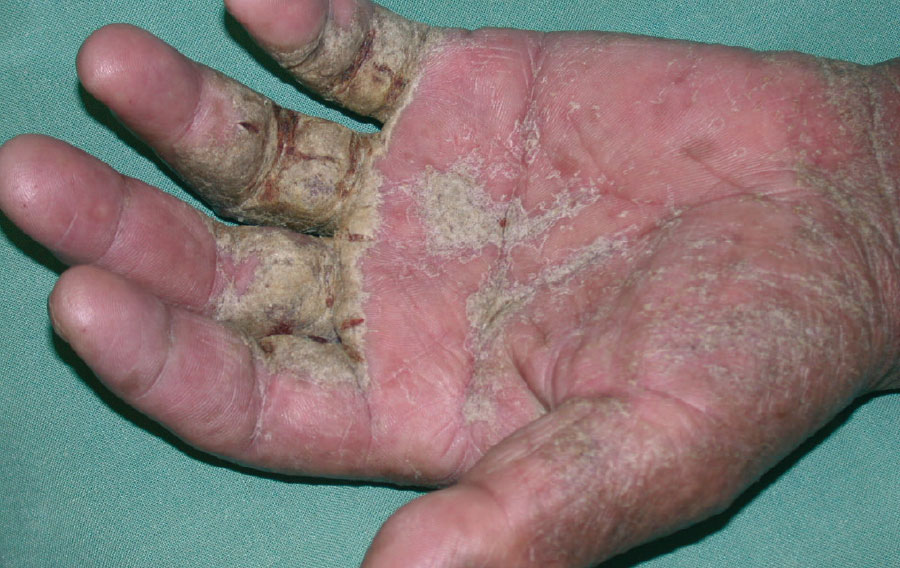What kills crusted scabies ?
CRUSTED SCABIES :
Scabies mites are only able to reproduce on human skin. The female scabies mite burrows into the top layer of skin and lays its eggs. Most people with scabies have an infection of roughly 10–20 mites. People with crusted scabies may have as many as 4,000 mites per gram of skin or an infection of more than 1 million mites.
People with crusted scabies may also experience different symptoms compared to people with regular scabies. People with crusted scabies may not experience itching or a rash, which occurs in regular scabies.
Scabies is contagious, and crusted scabies is especially so because it involves a larger infestation of mites. Crusted skin with mites can also fall off the body. This allows the mites to live for up to one week with food and protection and without the need for human contact.
WHAT ARE THE CAUSES OF CRUSTED SCABIES ?
People can get scabies from contact with someone who has scabies. Crusted scabies can pass on through skin-to-skin contact, as well as through clothing, bedding, or furniture.
There is currently no known cause for someone developing crusted scabies rather than the less severe form. There may be a link between crusted scabies and higher levels of disease-fighting white blood cells, along with the antibodies IgE and IgG.
Two types of white blood cells, called lymphocytes and eosinophils, invade the dermis layer of the skin. A person also has a higher level of lymphocytes than usual.
RISK FACTOR OF CRUSTED SCABIES :
Scabies is common in nursing homes and extended-care facilities in the United States. This is because frequent skin-to-skin contact between staff and residents can cause scabies to spread quickly.
Some people have a higher risk of crusted scabies. Risk factors include:- older age
- dementia
- Down syndrome
- a weakened immune system
- HIV
- Hansen’s disease (leprosy)
- lymphoma
- systemic lupus erythematosus (SLE)
- long-term use of corticosteroids or immunosuppressants
People in living in institutional settings may also have a higher risk of scabies in general.
WHAT ARE THE SIGNS AND SYMPTOMS OF CRUSTED SCABIES ?
Early signs of crusted scabies include red patches on the skin that lack a defined edge. These patches later develop into thick plaques.
Common areas where crusted scabies may appear on the body are:
- between the fingers
- underneath the nails, or in the nail beds, which may cause the nail to split
- spread over the palms of the hands and soles of the feet
- elbows
- knees
People may not have the itching or rash that usually appears with scabies. People may have slight itching, but this is not always present in crusted scabies.
HOW IS CRUSTED SCABIES DIAGNOSIS ?
People will need to see a doctor to diagnose crusted scabies. A doctor will examine the skin with a microscope to check for burrows, mites, and eggs.
Doctors may also use a technique called reflectance confocal microscopy (RCM). RCM is a non-invasive imaging method of examining the epidermis and dermis of the skin.
Infants and people who are pregnant may need a biopsy to confirm the diagnosis and ensure treatment is necessary.
HOW TO TREAT CRUSTED SCABIES ?
People will need to treat crusted scabies quickly to prevent spreading scabies to others. Treatment may include oral or topical medication or a combination of both. Those medications include oral Ivermectin , a medication to treat parasitic infections, and topical insecticides or scabicides such as Permethrin, benzyl benzoate, or Crotamiton.
People may also use keratolytic creams, which break down the protein keratin. These help to soften the thick, scaly plaques. People may use 5-10% salicylic acid in sorbolene cream or 5% lactic acid and 10% urea in sorbolene cream.
People may need to remove scaly patches of skin before applying treatments in order to help topical insecticides penetrate deeper into the skin. People may need treatment for several weeks or longer until the infestation is gone. People may need further treatment if they still have signs of a scabies infection after a month of treatment. Family members, or people in close contact with anyone with crusted scabies, will also need treatment with a topical scabicide.



Comments
Post a Comment